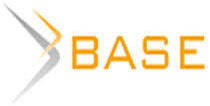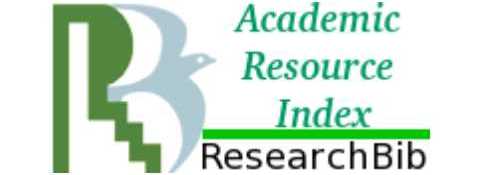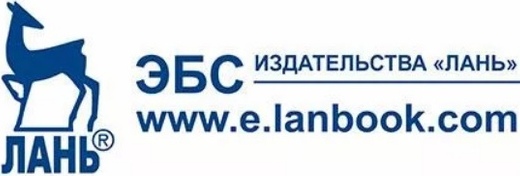Challenge of methodology for calculation of innovation activity indicators
The methodology for calculating the indicators of innovation activity by country, region and its participants is based on established practice. Comparison of innovation activity indicators, innovation indices and innovative capacity of the subjects of innovation activity provides incomplete or contradictory information about the real state of affairs in the country, industry, enterprise that creates and implements innovation. The purpose of the work is to identify inconsistencies in the methodology for calculating indicators of innovation activity and compare it at different levels (country, region or organization). The principal methods are the comparison of various indicators and their conjunctions (innovation index, innovation potential, share of intangible assets, R&D costs, types of intellectual property, their evaluation, number of patents and other indicators) by countries, regions and subjects of innovation activity and analysis of these indicators, degree of their completeness and consistency with each other at different levels. The results of the study have showed that such indicators as R&D costs, the ratio of tangible and intangible assets and the method of their accounting do not reflect the real value of intellectual property. The identified problems of methods for calculating indicators of innovation activity require a different calculation methodology, which should have a level structure and depend both on the innovation development policy of countries and regions, the scope of enterprises and their type, and on regulations, standards and protection of intellectual property rights of individual authors and right holders. Taking into account the levels of methodology and results of intellectual activity when calculating indicators of innovative activity gives a more complete picture of the contribution of entities implementing such activities to the economy of the country and regions and ensures economic growth for enterprises in any industry.
Kosheleva, Y. P. (2022), “Challenge of methodology for calculation of innovation activity indicators”, Research Result. Business and Service Technologies, 8(2), pp.
















While nobody left any comments to this publication.
You can be first.
Indikatory innovatsionnoj deyatel'nosti: 2022: statisticheskij sbornik (2022), V. V. Vlasova, L. M. Gohberg, G. A. Gracheva i dr.; National research university Higher School of Economics. Moscow: NIU VSHE, [Online], available at: https://issek.hse.ru/mirror/pubs/share/589979442.pdf (Accessed 27 April 2022).
Kozyrev, A. N. (2015), “Ekonomika intellektual'noj sobstvennosti: izmereniya, mifologiya, matematicheskie modeli”, Vestnik Rossijskoj akademii nauk, 85 (9), pp. 776–784. DOI: 10.7868/S0869587315090066.
Korchagina, I. V., Korchagin, R. L. (2020), “A variant of the innovation ecosystem for the diversification of the regional economy”, Journal of Economic Theory, 17 (1), pp. 79-90, [Online], available at: https://doi.org/10.31063/2073-6517/2020.17-1.6 (Accessed 27 April 2022).
Kosheleva, Yu. P. (2017), “Sozdanie kul'tury upravleniya intellektual'noj sobstvennost'yu (Creating a Culture of Intellectual Property Management)” Ekonomicheskie i sotsialno-gumanitarnye issledovaniya, 1 (13), pp. 21–29.
Sokolov, D. Yu. (2014), Patentnaya zashchita izobretenij posle vstupleniya Rossii vo Vsemirnuyu torgovuyu organizatsiyu (Patent Protection of Inventions after Russian’s Accession to the World Trade Organization), Moscow: INIC “PATENT”.
Tinyakova, V. I., Lavrinenko, Y. B. and Chemeris, O. S. (2022). “Study of the level of innovation of countries of the world in relation to their expenditures on higher education”, Research Result. Economic Research, 8 (1), pp. 121–133, DOI: 10.18413/2409-1634-2022-8-1-0-12.
Upravlenie innovatsiyami i intellektual'noj sobstvennost'yu firmy (Management of Innovations and Intellectual Property of the firm) (2018), S. V. Valdajcev, O. V. Motovilov, V. N. Lukashev i dr.; pod red. O. V. Motovilova, Moscow, Prospekt, 352 p.
Chzhen'pen, S. (2002), “Obzor klyuchevyh innovatsionnyh pokazatelej rossijskih regionov: analiticheskij obzor innovatsionnoaktivnyh territorij Central'nogo federal'nogo okruga”, Nauchnyj rezul'tat. Ekonomicheskie issledovaniya, 8 (2), pp. 34–44. DOI: 10.18413/2409-1634-2022-8-1-0-4.
Amara, N., Laundry, R., and Traore, N. (2008), “Managing the protection of innovations in knowledge-intensive business services”, Research Policy, 37 (9), pp. 1530–1547, [Online], available at: https://doi.org/10.1016/j.respol.2008.07.001 (Accessed 27 April 2022).
Bate, A. F., Wachira, E. W., and Sándor, D., (2021), The Determinants of Innovation Performance; An Income Based Cross-Country Comparative Analysis Using Global Innovation Index (GII). Research square, pp. 1–41, [Online], available at: https://doi.org/10.21203/rs.3.rs-955254/v1 (Accessed 27 April 2022).
Cornell University, INSEAD, and WIPO (2020), TheGlobal Innovation Index 2020: Who Will Finance Innovation? S. Dutta, B. Lanvin & S. Wunsch-Vincent (Ed.) Ithaca, Fontainebleau, and Geneva, [Online], available at: https://www.wipo.int/edocs/pubdocs/en/wipo_pub_gii_2021.pdf (date of access: 04/27/2022).
Lichtenthaler, U. (2011), “Open innovation: past research, current debates, and future directions”, Acad. Manag. Perspect., 25 (1), pp. 75-93, DOI: 10.5465/AMP.2011.59198451.
Lu, H., Du, D., and Qin, X. “Assessing the Dual Innovation Capability of National Innovation System: Empirical Evidence from 65 Countries”, Systems 2022, 10, pp. 23, [Online], available at: https://doi.org/10.3390/systems10020023 (Accessed 27 April 2022).
Tykkyläinen, S. and Ritala, P. (2021). “Business model innovation in social enterprises: An activity system perspective”. Journal of Business Research, 125, pp. 684–697, [Online], available at: https://doi.org/10.1016/j.jbusres.2020.01.045 (Accessed 27 April 2022).
Wonglimpiyarat, J. (2010). “Innovation index and the innovative capacity of nations”, Futures, 42 (3), pp. 247-253, [Online], available at: https://doi.org/10.1016/j.futures.2009.11.010 (Accessed 7 April 2022).
World Intellectual Property Report 2022 (2022), “The direction of innovation”, WIPO, 96 p.
Zhenpeng, Xu and Troshin, A. S. “New innovative guidelines for the Chinese economy by 2035”, Research Result. Economic Research, 7 (2), pp. 4-12, DOI: 10.18413/2409-1634-2021-7-2-0-1.
Zhang, J. and Groen, A. (2021), “Informal and formal open activities: Innovation protection methods as antecedents and innovation outputs as consequences”, Technological Forecasting and Social Change, [Online], available at: https://doi.org/10.1016/j.techfore.2021.120696 (Accessed 7 April 2022).